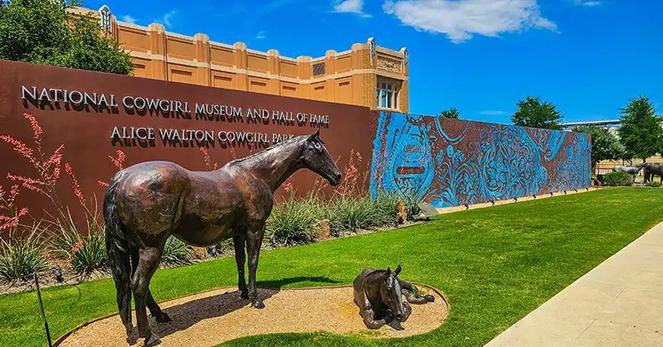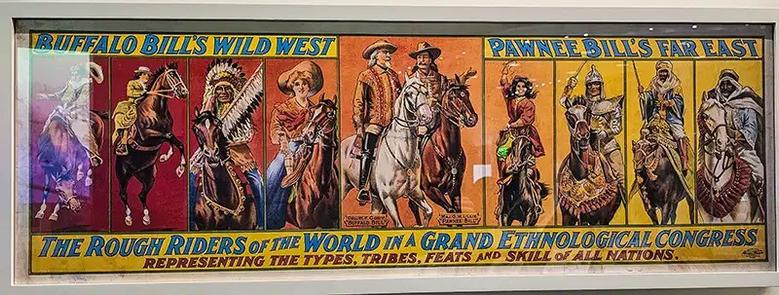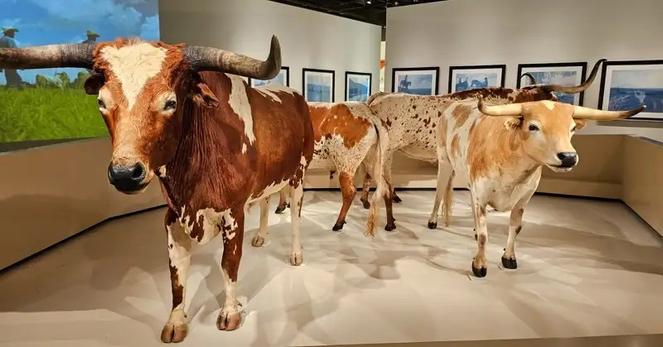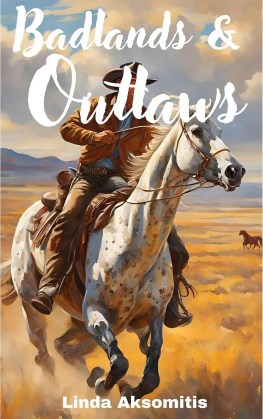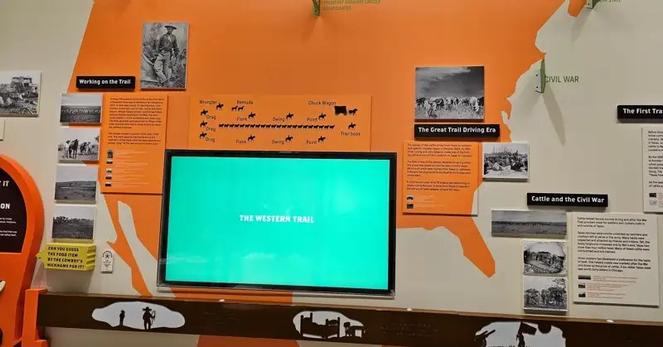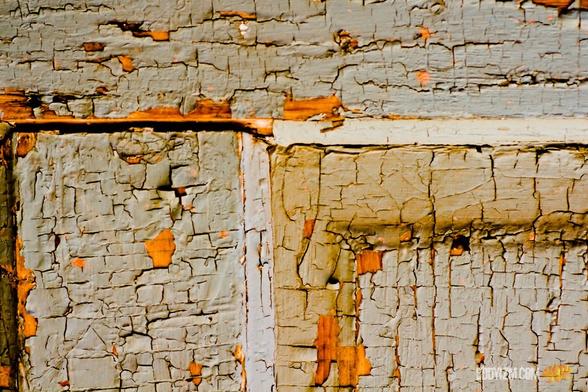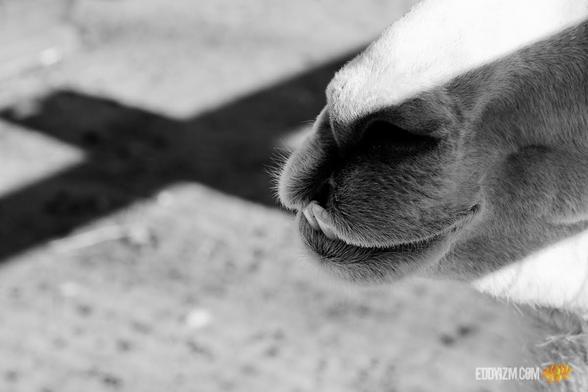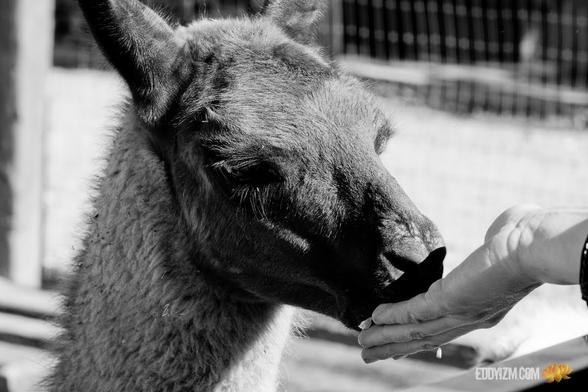National Cowgirl Museum & Hall of Fame: Cowgirl history in Fort Worth, Texas
Annie Oakley may be the most famous cowgirl ever! You’ll find her story, along with many others, in the National Cowgirl Museum and Hall of Fame in Fort Worth, Texas.
Second floor of the National Cowgirl Museum and Hall of Fame dedicated to trailblazing women of the west. Photo by Linda Aksomitis.Linda’s Pick of the Exhibits
I grew up with horses, rode gymkhana and participated in horseshows. So, when it comes to my favorite gallery at the National Cowgirl Museum it was hands down Hitting the Mark: Cowgirls and Wild West Shows exhibit.
Fast Fact: Did you know you could see a 20,000 piece animated, to-scale model of the Wild West Show?The best part? Meeting Annie Oakley–really. The hall of fame uses Pepper’s Ghost cutting-edge technology to merge historic photos with a stand-in model.
So, there she is–face-to-face telling you her story.
Annie Oakley grew up in Ohio, dirt poor, using her shooting skills to help feed her siblings. Her first competition earned her a husband, well-known marksman, Frank Buttle. She beat him, scoring 25 hits out of 25 shots! Being a smart man, he married her before she could get away.
Pin me! Annie Oakley exhibit photo by Linda Aksomitis.Annie tried out for Buffalo Bill’s Wild West Show (see the poster on the display) in Kentucky in 1885. She was hired on the spot. The promoter, seeing her potential to entertain crowds, ordered $7000 worth of printing about her.
Fast Fact: The first year Annie was with Buffalo Bill's Wild West Show she played in 40 cities in front of over 150,000 people. She went on to play in Europe for three years with the show, returning to the US in 1892. In 1893, the show had its best year, performing for 6 million people, making a million dollars profit.Female performers were wildly popular with the Wild West Show crowds. Most of the cowgirls had worked on the family ranch, and used their skills to have experiences unparalled by women of the time.
1910 poster from Wild West show. Photo by Linda Aksomitis.They travelled the world. They had professional well-paid jobs. They established new clothing styles, taking traditional cowboy clothing and designing and sewing their own costumes.
When it comes to early female trailblazers, this national western heritage museum does a great job of telling their stories.
What’s in the National Cowgirl Museum and Hall of Fame?
The National Cowgirl Museum and Hall of Fame is a 33,000 square foot facility on the Will Rogers Memorial Complex in Fort Worth, Texas. It’s a cowboy heritage museum honoring cowgirls, as well as a Hall of Fame.
Cowboy boots belonging to a Miss Rodeo America and a Miss Rodeo Texas 1st runner up, as well as barrel racer, actress, author, and singer. Pin photo by Linda Aksomitis.- 1st floor – contains visiting exhibits as well as the Grand Rotunda mobile, the Anne W. Marion Gallery, and Hitting the Mark: Cowgirls and Wild West Shows Gallery.
- 2nd floor – contains the Kit Moncrief Galleries, the Western Design Room and the Bucking Bronc Room, along with an interactive project table created for the museum. It allows visitors to select patterns and textures from the museum collection and design objects such as boots, shirts, or even horses.
The cowgirl museum has two floors, both of which have been extensively renovated by world-class teams.
Fast Fact: Prior to the 1900s and the Wild West Shows, women were supposed to ride sidesaddle, wearing traditional long skirts. However, with the adoption of skirts split up the middle, which were worn by the performers, cowgirls could use stock saddles and not be immodest getting on and off the horses. One of the artifacts on display in the museum is a 1915 black leather split skirt.Throughout this western heritage museum, you’ll find the stories of cowgirls in history, right up to today’s cowgirls inducted into the Hall of Fame.
What books did Linda write about the old west?Station No. 1 on the Outlaw Trail: Old West Outlaws
Kidnapped by Outlaws (Sequel to Badlands and Outlaws)
Linda’s Road Trip Tips
My first tip — get to this part of Fort Worth early in the day to avoid Fort Worth’s heavy traffic! There’s ample paid parking available in the City of Fort Worth lots in the Cultural District, although we found it a little tough to find the right parking lot to not walk a mile. However, the parking attendants were amazing at pointing the way.
Alice Walton Cowgirl Park at the National Cowgirl Museum and Hall of Fame. Photo by Linda Aksomitis.If you’re roadtripping, you’ll also want to visit the other museums in the complex. We did the Cowgirl Museum first, so got a discount on our tickets to the other Forth Worth attractions.
- Cattle Raisers Museum
- Omni Theater IMAX Dome
- Fort Worth Museum School – contains Forth Worth Children’s Museum, DinoLabs & DinoDig, Energy Blast, and Innovation Studios (6000 sq ft of learning space).
Who Should Visit the National Cowgirl Museum and Hall of Fame?
This western heritage museum is a great place for girls to see what women can achieve in an industry that’s always been predominately male.
From cowgirl history, through the actresses who portrayed women in the old west, to today’s cowgirls, there are many amazing stories.
Of course, the whole family will enjoy the galleries, as they’re full of glitz and glamor and high-tech attractions.
We spent a couple of hours visiting, but certainly longer would have been better to read all of the information provided on cowgirls.
The museum is handicapped accessible with an elevator between floors.
Split skirt worn by Dale Evans in the hit tv show, The Roy Rogers Show, she starred in with her husband in the 1950s. Photo by Linda Aksomitis.How Do You Visit the National Cowgirl Museum and Hall of Fame?
The National Cowgirl Museum and Hall of Fame is located at 1720 Gendy Street in the Cultural District of Fort Worth, Texas, about one mile north of I-30.
Get opening days and admission costs at the National Cowgirl Museum and Hall of Fame website.
Get the latest news about what’s happening at the National Cowgirl Museum and Hall of Fame Facebook page.
Take a virtual tour of the cowgirl museum with CBS Texas on YouTube.
Autographed guitar and saddles. Photo by Linda Aksomitis.Find More Museum Reviews for Texas
Check out more reviews of museum attractions in Texas on guide2museums.com.
Read More History Museum Reviews
-
Amazing Giant Bison, Beaver, Mammoths & More: Yukon Beringia Museum in Whitehorse
-
Fick Fossil & History Museum: Buffalo Bill to Prehistoric Fish in Oakley, Kansas
-
Ronald Reagan Presidential Library & Museum: Simi Valley, California
-
National Cowgirl Museum & Hall of Fame: Cowgirl history in Fort Worth, Texas
-
Bell Barn Museum: Historic Round Barn in Indian Head, Sskatchewan
-
Texas Seaport Museum: Gulf Coast History in Galveston, Texas
-
Jefferson Historical Museum in Big Cypress Bayou: Jefferson, Texas
-
Mystic Seaport Museum: Historic Seafaring Village in Mystic, Connecticut
-
Range Riders Museum: Old West Lives Again in Miles City, Montana
#cowboys #cowgirls #HallOfFame #history #I20 #I30 #I35 #museums #oldWest #Texas #travel #US_ #westerns
